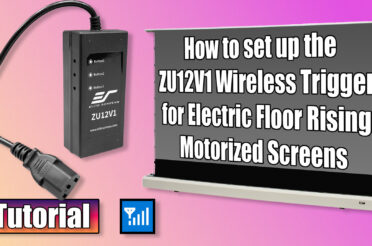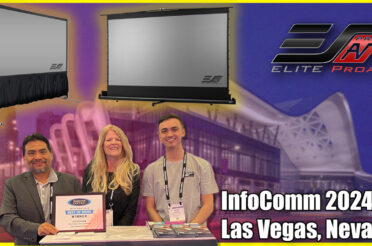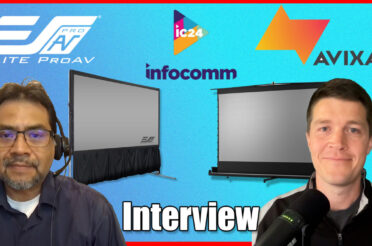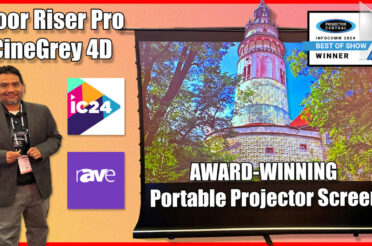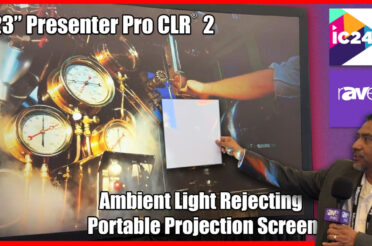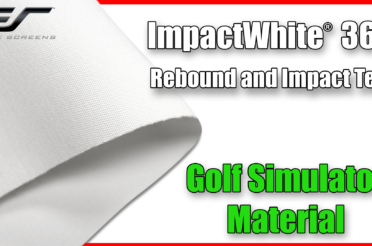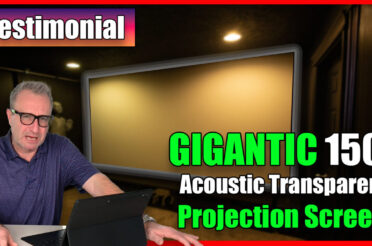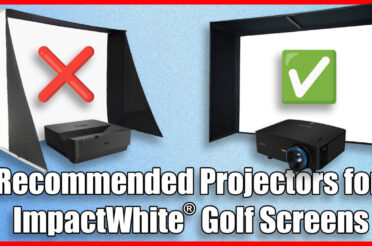Intro:
There are many good screen options for projectors but an ultra-short-throw (UST) projector requires a more specialized approach. In this case, the customer is interested in the difference between matte white and “ALR” options for a UST projector. Since the request is for a manual roll-up design, the material must be properly tensioned or it will not give a good picture. The screen must be perfectly flat. If not, the UST projection will be badly distorted.
Ambient Light Rejecting (ALR) materials are trending strong with projection screens because the big screen is coming out of the back room and into the living room. Now, you can replace a large flat panel TV with a larger-than-life video display. The only drawback is that TV rooms and living rooms have normal levels of interior lighting. ALR materials negate the washout effects of incident room lighting (every light source but the projector itself).
What is CLR? Ceiling Light Rejecting® or CLR® is an ambient light rejecting material that excels at rejecting the washout effects of overhead lighting. In most commercial and residential applications, there are in ceiling light sources. A CLR® material will help negate that.
In the case of this selection, the customer was made aware of CLR® options for manual roll-up screens, but since this is a UST projector, the focus will be on a reference-grade matte white material that will work perfectly with UST projectors.
(Customer Inquiry) Do you make a manual screen that is 110-120″, and a high-quality ambient light rejecting material like your Cine Grey 3D/5D? I don’t see this on your site but maybe I am not seeing it or misunderstanding the need for ALR. I have an Optoma P1 being delivered and would like a screen I could use in our basement to mount to ceiling or wall, and also move outside without too much trouble, for movie/game nights with neighbors in the summer and fall. Given the UST projection and occasional outdoor use with higher ambient light potential, I would prefer to maximize performance with a material that works well for that purpose. I do not need motorized or want to worry about power source or pay extra for a feature that means nothing to us.
Hoping you offer something that can tick all these boxes.
(Elite Screens Answer) Thank you for your inquiry. We have a premium grade (non-electric) “roll-up” projection screen known as the Manual Tab-Tension 2. This is a well-made product that is tab-tensioned for added flatness and that is ideal for your UST projector. The design also features a slow-retract mechanism (SRM) that allows the screen to retract unassisted once the toggle is released.
Although there is an interest in an ALR/CLR® material with this product, I strongly recommend that you consider the CineWhite® UHD-B is a 1.3 matte white 1.3 gain material. This product is ISF certified for superior picture performance and its tab-Tensioned flatness ensures compatibility with standard “long-throw”, short-throw, and ultra-short-throw (UST) projectors. This is primarily the best value for your UST projector if you want high quality at the best price.
As an added value, we are adapting this line to accept our CineGrey 3D® and CineGrey 5D® (ALR/CLR®) materials. While these ceiling light rejecting materials are ideal for long-throw projectors, we do have other product lines that feature a CLR® material specifically for UST projectors.
For the Manual Tab-Tension 2, there are models in 4:3, 16:10, and 16:9 aspect ratios with sizes ranging from 100” to 140” inches diagonal. I have included links to inform you about those products:
- Where to Buy the Manual Tab-Tension 2 – https://www.amazon.com/Elite-Screens-Tab-Tension-106-Inch-Diagonal/dp/B07W6XV97K/ref=sr_1_1?keywords=MT106XWH2&qid=1576471381&sr=8-1
- Manual Tab-Tension 2 Product Page – https://elitescreens.com/front/front/productdetail/product/492
- Educational Video on UST Projector Compatibility – https://elitescreens.com/elitetube/UST_Compatibility.mp4
- Comparison video of Matte White Vs. CineGrey 3D® – https://elitescreens.com/elitetube/MatteWhite_CineGrey3D_CompVideo_Web.mp4
*The discussion below is based on actual chat transcripts with the omission of any personal/confidential material to protect the customer’s privacy. An example in this case is to change the contact’s identification name/number to “Customer” or a generic name.
*The discussion below is based on actual chat transcripts with the omission of any personal/confidential material to protect the customer’s privacy. An example in this case is to change the contact’s identification name/number to “Customer” or a generic name.
